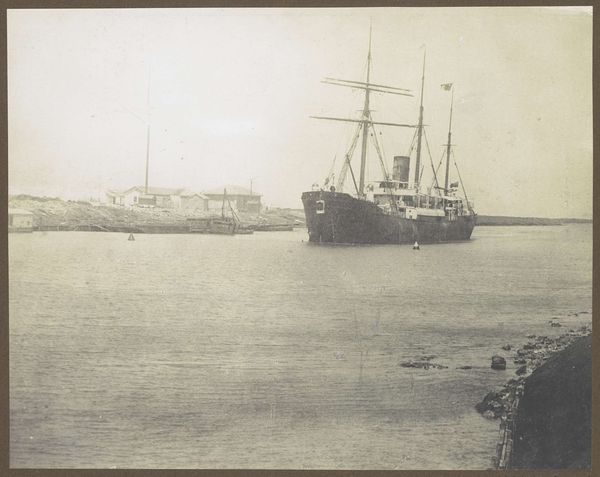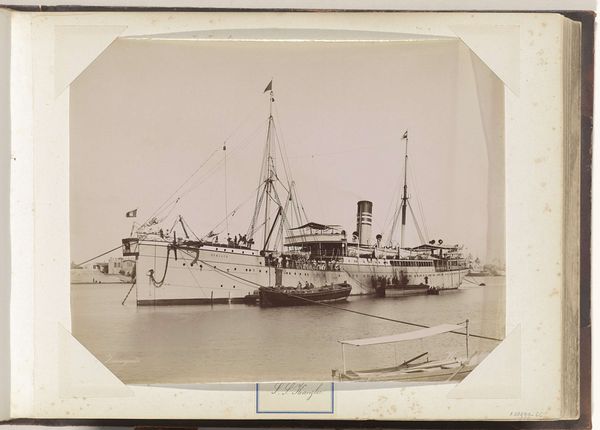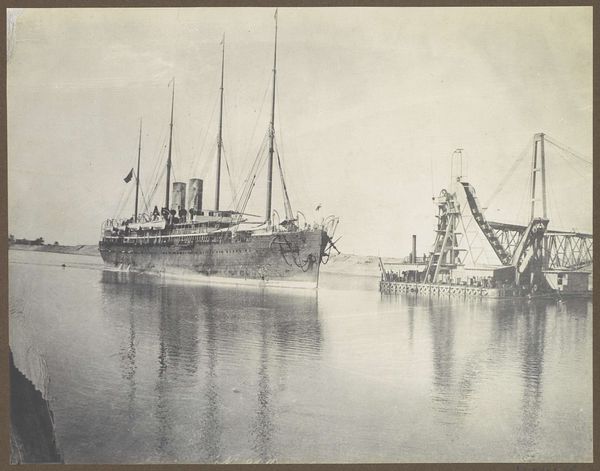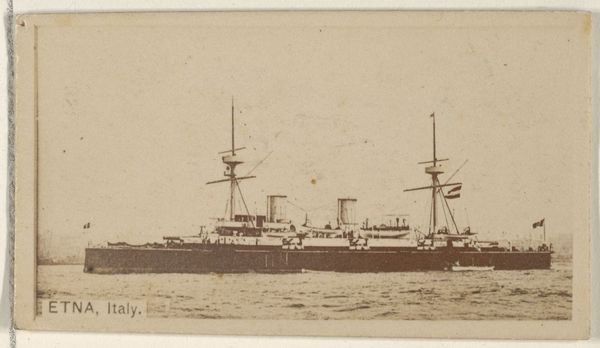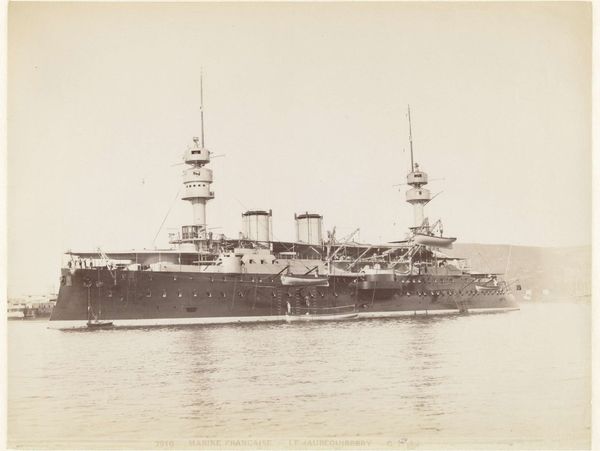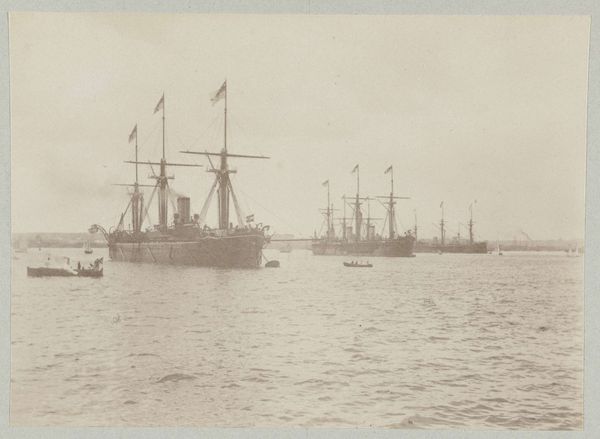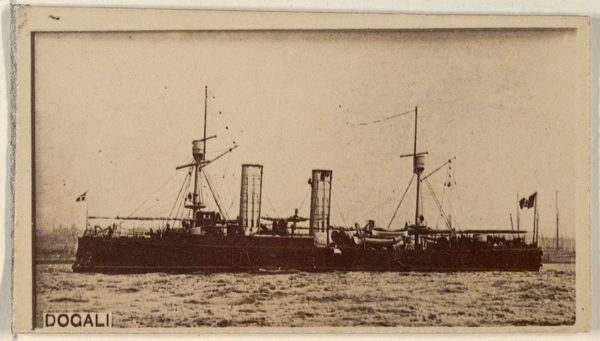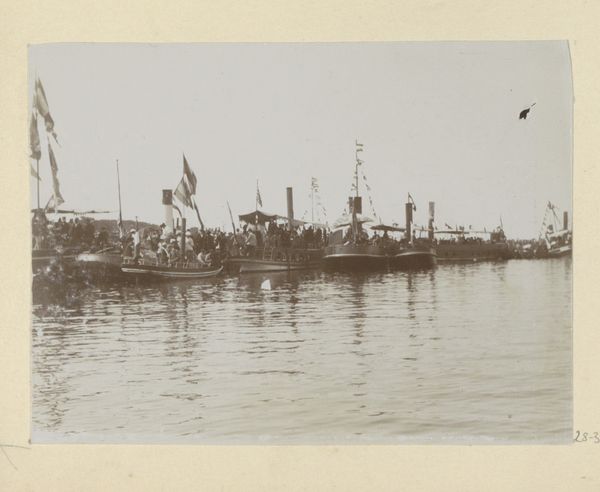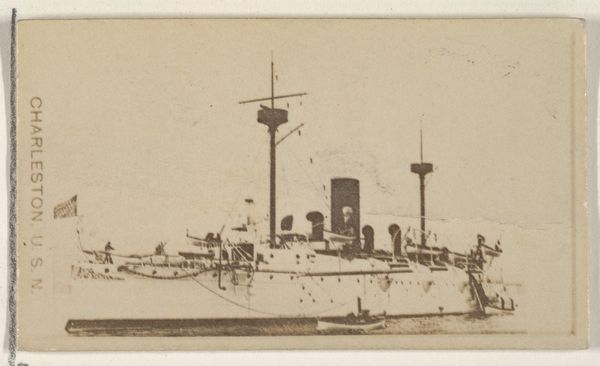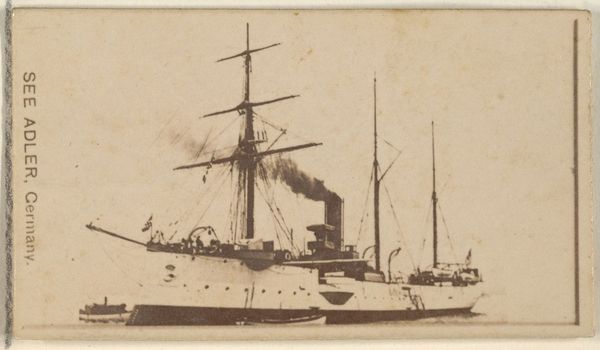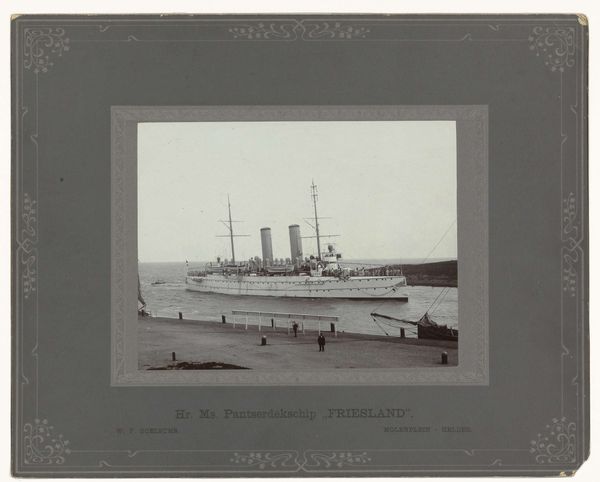
Duitse marineschepen langs de kust voor Kiel c. 1903 - 1910
0:00
0:00
geldolphadriaankessler
Rijksmuseum
print, photography, gelatin-silver-print
#
print photography
# print
#
landscape
#
outdoor photograph
#
outdoor photography
#
photography
#
gelatin-silver-print
#
modernism
Dimensions: height 80 mm, width 110 mm, height 363 mm, width 268 mm
Copyright: Rijks Museum: Open Domain
Editor: Here we have "German Navy Ships off the Coast near Kiel," a gelatin silver print dating from around 1903-1910, by Geldolph Adriaan Kessler, housed in the Rijksmuseum. The mood feels strangely serene, despite the subject matter. What can you tell me about this photograph? Curator: From a materialist perspective, it's crucial to consider the industrial processes that allowed for the creation of both the ships and this photograph. The gelatin silver print itself speaks to advances in photographic technology and the mass production of images. Notice how the light reflects off the water, almost mirroring the metal hulls of these warships. The materiality of the ships—steel, iron, and paint—contrasts with the relative fragility of the photographic print, a paper support holding a silver image. What does that contrast suggest to you? Editor: That's interesting. Maybe it speaks to the permanence that photography tries to give ephemeral objects, in this case the fleeting nature of military power? Curator: Precisely. And consider the social context: the rise of German naval power, driven by industrial production and colonial ambitions. This image, seemingly a simple landscape, is actually a document of industrial and military expansion. How does knowing that influence your understanding of the image's serenity? Is it truly serene, or does it contain an undercurrent of tension? Editor: I see what you mean. Knowing the historical context definitely taints that initial feeling of serenity. It’s more like the calm before the storm. Thanks, I’ve never really considered a photograph in this way before. Curator: My pleasure. It's essential to remember that art is not made in a vacuum, it’s intrinsically tied to the material conditions and the socio-political context of its production. Looking at this print, and knowing how it was made, helps to contextualize our contemporary ideas around military history and conflict.
Comments
No comments
Be the first to comment and join the conversation on the ultimate creative platform.

